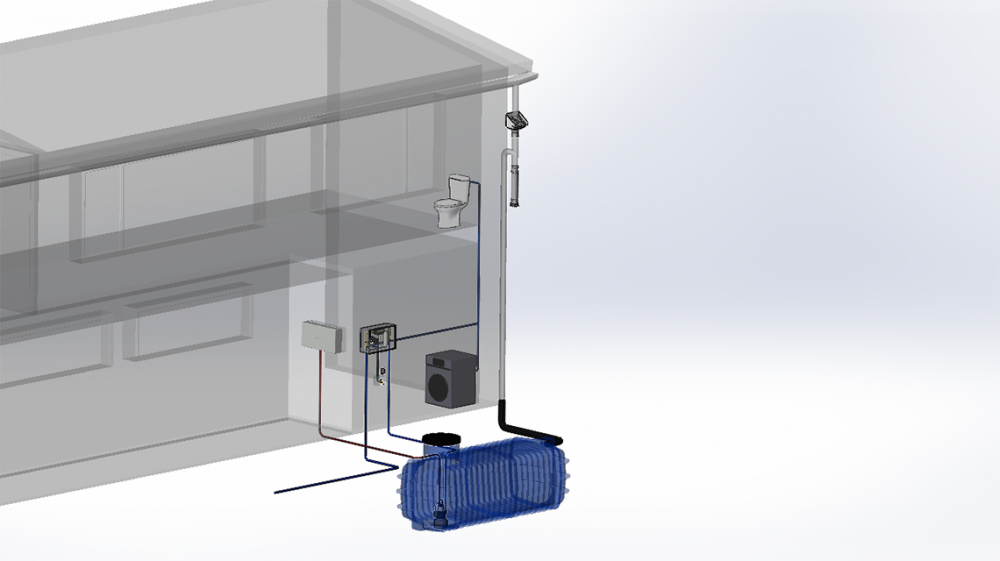Friday, 30 June 2023 Knowledge Articles
Dual Purpose Tanks: Twice as Good for Infrastructure
How Promax dual-purpose detention and retention tanks ease pressure on infrastructure
Stormwater mitigation in new residential properties is now compulsory in many New Zealand cities. Stormwater detention is a vital element in making new builds compliant with council regulations.
Stormwater detention refers to rainwater being captured and stored in a holding device (invariably a tank) either above or underground. The tank’s capacity is designed to hold stormwater from a specific rain event, which differs between council jurisdictions. However, in most cases, capacity is based on 10-year Average Recurrence Interval (ARI) events and can be up to 50-year ARI events. Public infrastructure is typically designed to handle up to 100-year ARI rain events.
When new builds are required to mitigate their own stormwater on-site; the water slowly drains at a constant rate to the stormwater main. To achieve this, each house has a small tank with an outlet, or orifice. The tank size is determined by the stormwater engineer OR local council-approved solution. The orifice restricts the outflow from the tank to the stormwater main and is designed to release the detained volume inside the tank over a 24-hour period. This means none of the stormwater is used for beneficial purposes like irrigation. Instead, somewhat wastefully, it’s caught and let go.
Promax believes that the most sustainable method of stormwater mitigation is detention AND retention inside the same tank. The dual-purpose tank is designed so that not all stormwater is released, with some retained for greywater reuse throughout the dwelling and property.
For example, a 4,000 litre tank might have 1,850 litres of detention volume in the top section and 2,150 litres of retention volume in the bottom section. A tank of this nature eases infrastructure pressure in several ways:
- During the rainy season, the household can use tank water for the laundry/toilet flushing / outside taps and non-potable use. As a result, there’s less draw on the dams during the rainy season, allowing them to fill faster.
- It reduces pressure on the stormwater network, with households reusing much of the water instead of releasing it to the council’s stormwater infrastructure.
- There is no additional pressure on the wastewater network, as the same amount of water is used through the household; it’s just no longer coming from the main supply.
Usually, dual-purpose tanks are the same size as those designed and plumbed solely for detention. As a tank manufacturer, there is no additional benefit to upsizing the tank; instead, innovative tank design and smarter plumbing in a new house will significantly enhance and protect potable and stormwater infrastructure.
Homeowners often view detention tanks as a grudge purchase. They see no tangible benefit from installing it. The biggest advantage is that flood events are mitigated; however, they cannot fully appreciate the positive effect because the tank is unobtrusively doing its job.
On the other hand, if homeowners can capture and reuse the water, the result is visible and tangible. It’s much easier to sell the concept of using the water instead of slowly releasing it to the stormwater network.
Promax is committed to sustainability. Our dual-purpose tanks tick a lot of boxes in that respect. They allow our customers to reuse stormwater while significantly easing the pressure on New Zealand’s infrastructure. Contact the Promax sales team to learn more about the benefits of detention and retention in one tank.

